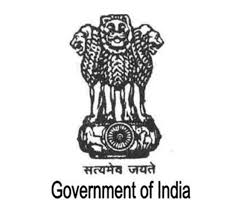The Indus Valley civilization, one of the world's oldest, flourished during the 3rd and 2nd millennia B.C. and extended into northwestern India. Aryan tribes from the northwest infiltrated the Indian subcontinent about 1500 B.C.; their merger with the earlier Dravidian inhabitants created the classical Indian culture. The Maurya Empire of the 4th and 3rd centuries B.C. - which reached its zenith under ASHOKA - united much of South Asia. The Golden Age ushered in by the Gupta dynasty (4th to 6th centuries A.D.) saw a flowering of Indian science, art, and culture. Islam spread across the subcontinent over a period of 700 years. In the 10th and 11th centuries, Turks and Afghans invaded India and established the Delhi Sultanate. In the early 16th century, the Emperor BABUR established the Mughal Dynasty, which ruled India for more than three centuries. European explorers began establishing footholds in India during the 16th century.
By the 19th century, Great Britain had become the dominant political power on the subcontinent. The British Indian Army played a vital role in both World Wars. Years of nonviolent resistance to British rule, led by Mohandas GANDHI and Jawaharlal NEHRU, eventually resulted in Indian independence, which was granted in 1947. Large-scale communal violence took place before and after the subcontinent partition into two separate states - India and Pakistan. The neighboring nations have fought three wars since independence, the last of which was in 1971 and resulted in East Pakistan becoming the separate nation of Bangladesh. India's nuclear weapons tests in 1998 emboldened Pakistan to conduct its own tests that same year. In November 2008, terrorists originating from Pakistan conducted a series of coordinated attacks in Mumbai, India's financial capital. Despite pressing problems such as significant overpopulation, environmental degradation, extensive poverty, and widespread corruption, economic growth following the launch of economic reforms in 1991 and a massive youthful population are driving India's emergence as a regional and global power.
India is a federal parliamentary republic.
Source: CIA World Factbook
Members:
Resources
Displaying 31 - 35 of 91Supreme Court of India Judgment on Village Common Land in Case of Jagpal Singh & Ors vrs. State of Punjab & Ors. (Civil Appeal No.1132 /2011 @ SLP(C) No.3109/ 2011
This is a judgment of Supreme Court of India to check grabbing of village common land including ponds and water bodies (called in different names) by unscrupulous persons, political clout, powerful vested interests, corrupt state authorities, etc by fraudulent practices and ensure their protection and safeguard.
Report to The People On Environment And Forests 2010-11
The 'Annual Report to the People on Environment and Forests' by The Ministry of Environment and Forests (MoEF), Government of India tries to make the citizens of India aware of country's State of Environment and generate greater environmental consciousness amongst them.
Forest governance and implementation of REDD+ in India
This report indicates that the Forest governance is identified as critical to the success of REDD+.
Implementation of robust REDD+ strategy is possible through Community Based Forest Governance.
Report talks on Reducing Emissions from Deforestation and Degradation (REDD+) which is a global mechanism that aims at sustainable forest management (SFM) through protecting forests and enhancing carbon sequestration.
Report briefly describes The Scheduled Tribes and Other Traditional Forest Dwellers (Recognition of Forest Rights) Act, 2006
Report Of The Four Member Committee For Investigation Into The Proposal Submitted By The Orissa Mining Company For Bauxite Mining Niyamgiri
The Orissa government’s agreement with Vedanta Alumina to allow mining of bauxite deposits in the Niyamgiri hills, the home of the Dongaria Kondha tribe, is an example of how corporate interests backed by state support are trampling on tribal livelihoods and threatening an ecologically rich and important region.
Report Of The Evaluation Study On Hill Area Development Programme In Assam And West Bengal
The Hill Area Development Program (HADP) has been introduced by the Government of India to initiate socio economic development in the hill areas of India since the inception of the Fifth Five Year Plan. The main objective of this program is to ensure „sustainable‟ development of hill areas, keeping in view the basic needs of the hill people and generating ample livelihood options for the local community. With the progress of the Five Year plans, the focus has been shifting to preservation of biodiversity and rejuvenation of hill ecology.


